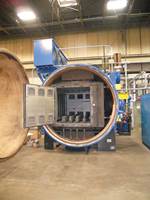How to Avoid Tool Steel Corrosion
A mold builder should consider corrosion resistance, hardness, machinability, processing, polishability, operational environment and wear resistance during tool steel selection.
One of the most important requirements for extending mold life is improved corrosion resistance. Stainless steel is common in plastic mold manufacturing because it is very resistant to condensation, cooling water and acid precipitation.
Plastics, in general, are not considered chemically aggressive. However, molds can be subjected to highly corrosive stresses under operating conditions during molding. These stresses range from extreme climatic influences to PVC usage, which can release hydrogen chloride if exposed to temperatures around 170°C for long periods of time. Hydrochloric acid can also form during PVC production when the air is humid. Another factor influencing stress is the mold design when features like complex engraving or cooling channels are included.
Striking a balance between corrosion resistance, hardness and machinability are key to selecting the right tool steel, but the most important factors are processing, polishability, operational environment and wear resistance.
Striking a balance between corrosion resistance, hardness and machinability are key to selecting the right tool steel, but the most important factors are processing, polishability, operational environment and wear resistance.
Here are three tool steel types to consider:
ESR martensitic plastic mold steel has excellent wear resistance after quenching and tempering to the desired work hardness. It is suitable for applications requiring good polishability and can also be used in plastic injection molding, form presses, and extruders. This mold steel type is not easily welded or nitrided, but it does have good corrosion resistance, toughness, and machinability. It is also suitable for texturing.
Precipitation hardening steel is extremely corrosion resistant. This material also requires no additional hardening and tempering by the customer because it already has a work hardness of 38-42 HRC after hot forming and heat treatment. It also has high strength and toughness. This material is primarily used for molds that demand resistance to condensation and cooling water. Its high wear resistance also makes it an alternative steel material when processing plastics like PVC or amino plastics whose acid can attack steel.
Special steels with alloying elements, such as chromium, manganese, and sulfur, offer hardness, high corrosion resistance, and excellent machinability. Their properties are largely determined by targeted metallurgical treatment for sulfur dispersion and heat treatment. In this process, the steel is heated to a temperature of 800°C under controlled conditions and quenched in water or a polymer. This treatment promotes a uniform microstructure, resulting in a dimensionally stable product.
About the Authors
Kathrin Eger, Daniel Kipp, Dr. Philipp Niederhofer, Dr. Hans-Günter Krull are with Deutsche Edelstahlwerke
For More Information
800-323-1233
Related Content
-
How to Achieve the Best Mold Finish
A look at factors that impact the polishability of tool steels and recommendations for obtaining a high-gloss finish.
-
How to Eliminate Chatter
Here are techniques commonly used to combat chatter and guidelines to establish a foundation for optimizing the moldmaking process.
-
Maintaining a Wire EDM Machine
To achieve the ultimate capability and level of productivity from your wire EDM on a consistent, repeatable and reliable basis, regular maintenance is a required task.














